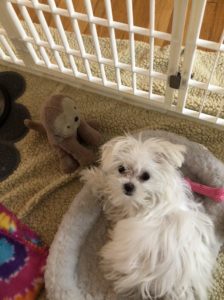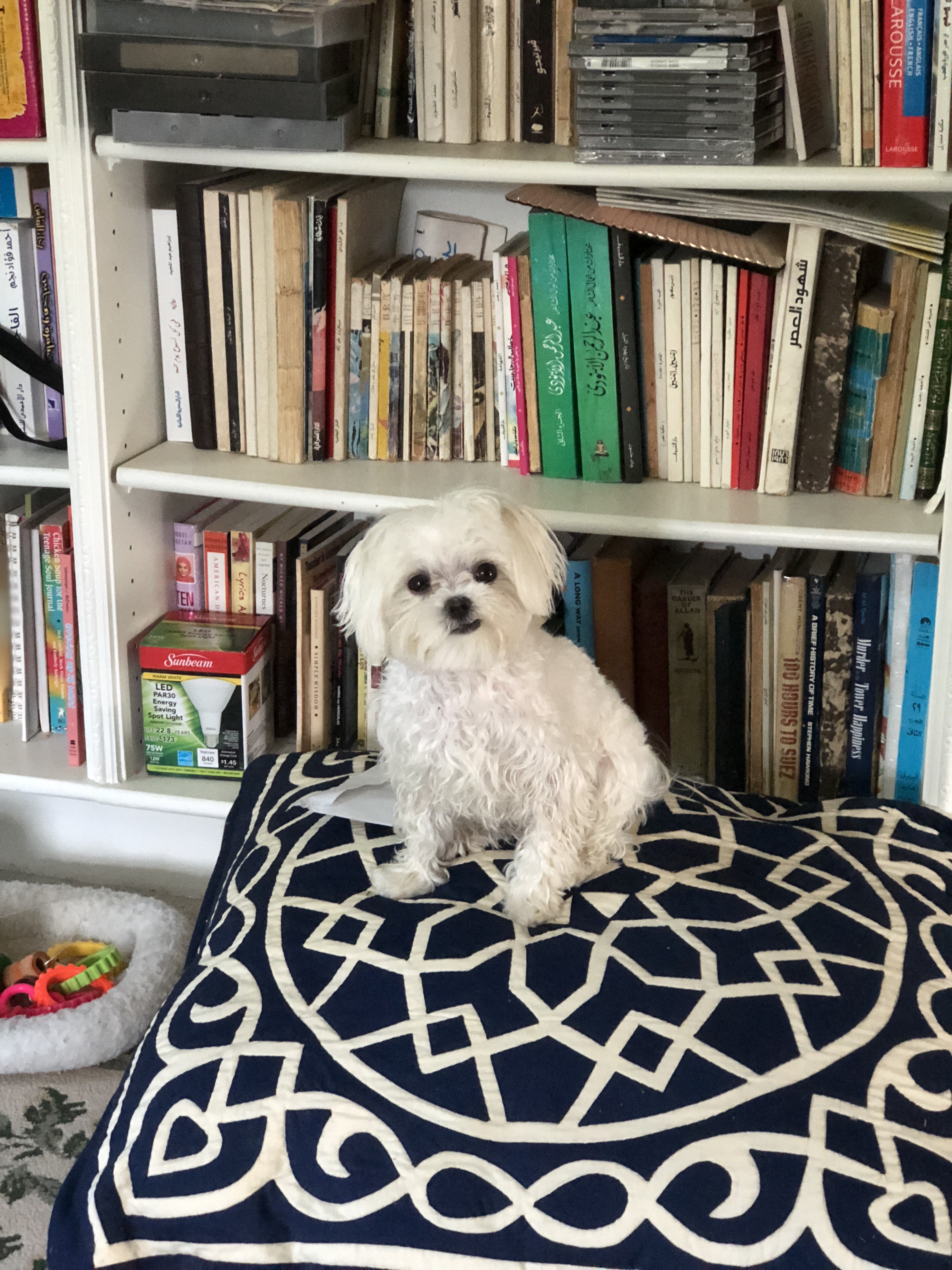Healthy Feeding
Just like humans, Maltese Dogs, and more specifically Maltese dogs, food will directly impact their health, level of energy and longevity.
The above statement does not surely mean that we should jeopardize the good taste for our dog. Quite the contrary, we need to provide our dog with savory meals that would make him wanting to eat. Healthy Food that is high on nutrients without causing any upset stomach or allergy reactions
Feeding Transitions
 When it comes to food, all Maltese dogs do not like sudden change in the diet. Puppy or not, when you bring your dog to your house for the first time, and if you decide you want to introduce a new kind of food, you have to be careful, new food has to be gradual in order to avoid upset stomach. However, you will want this to be a gradual change. Making a fast switch can cause upset stomach issues, and a puppy may not be too keen for new flavors.
When it comes to food, all Maltese dogs do not like sudden change in the diet. Puppy or not, when you bring your dog to your house for the first time, and if you decide you want to introduce a new kind of food, you have to be careful, new food has to be gradual in order to avoid upset stomach. However, you will want this to be a gradual change. Making a fast switch can cause upset stomach issues, and a puppy may not be too keen for new flavors.
If you are getting your puppy from a reputable breeder, chances are the breeder will give you a small amount of the food that was given to the dog, typically the amount should last few days, until you get the chance to work out a plan to introduce the kind of food you prefer.
The following gradual switch has been tried time and time again, and works well with almost all types of dogs.
• Week 1: 1/4 new food to 3/4 old.
• Week 2: 1/2 old to 1/2 new
• Week 3: 3/4 new to 1/4 old
• Week 4: Maltese will be be solely on the new food.
Dry Vs Wet
In general, most dogs prefer wet slobbery food. Although that is not always the best choice for dogs, as the dependency on wet food all the time, will cause the Maltese dog to have loose stool.
In addition to that, Dry kibble are much healthier for the teeth. Therefore, Dry kibbles are the better option.
Tip: if you notice your dog is not too crazy about dry kibbles, you may want to top it with some food topper or low sodium chicken broth.
Therefore, dry kibble is best for most Maltese, though you can mix in a bit of wet food (the same brand as what you are choosing for dry is recommended), or drizzle a bit of low-sodium chicken or beef broth over the kibble if your Maltese needs a small bit of encouragement.
 Also, warming food can help encourage meals to be eaten; this can be done in the microwave; however, be sure to stir the food once it is done warming, and check the temperature with your pinkie finger or inner wrist to ensure that it is not hot to the touch.
Also, warming food can help encourage meals to be eaten; this can be done in the microwave; however, be sure to stir the food once it is done warming, and check the temperature with your pinkie finger or inner wrist to ensure that it is not hot to the touch.
Frequency:
New puppies – 8 week mark to the 12 week: free feed, meaning leaving food all the time for the puppy to nibble on all day to avoid the possibly of having low blood sugar (Hypoglycemia).
Puppies – Now from 12 weeks to 9 months, we should feed the Maltese dog 3 times a day.
If you will be gone for the mid-day meal, you can leave this in a bowl or place a serving inside a treat dispensing toy. Mixing your chosen kibble with a bit of smooth, all-natural peanut butter is usually a well-received method for filling treat-release chews.
Adults – Because Maltese dogs are small dogs, even when they reach adulthood, it is preferred to continue to provide 3 meals a day.
Quantity:
Maltese puppies and Maltese dogs eat a surprisingly small amount of food. Before we dive into how much food a Maltese should eat, it must be pointed out that different foods vary quite a bit in regard to calories. And that is what this all comes down to.
Some foods, particularly higher quality dog foods and home cooked food, are calorie dense. Therefore, serving sizes are often smaller than with less-than-ideal brands.
Pay attention to the cheaper food that will contain fillers. Fillers are additions to the ingredients that have little value in terms of calories and nutrients.
Calorie requirements: as Maltese puppy to continue to grow, they will require about 55 calories per pound of body weight, per day. This number drops to about 45 calories when the Maltese dog reaches 9 month mark.
Note that this number can go up or down 20%, and depends on a dog’s activity level, health, age, and individual metabolism.
Serving sizes: It is suggested to choose one of the best brands possible, and to follow the recommended serving sizes as shown on the label; these are pretty spot on.
By weight :
- Maltese 2 to 4 pounds will eat about 1/4 cup to 1/2 cup per day.
- Maltese 5+ pounds will eat about 1/2 cup to 3/4 cups per day.
Choosing the Best Food for Maltese Puppies and Dogs
This is not an easy topic, don’t get fooled by the well-known dog food brands, as some of those brands have poor ratings in terms of the quality of food ingredients.
In particular, most of the dog food that you will see displayed at local supermarkets are among some of the worst.
Why try to avoid cheap food :
Fillers – Useless ingredients that are added to some cheap dog foods to incease the weight.
Fillers have very few calories and typically are not absorbed by the body; they come right back out without offering any nutrition.
Examples of useless fillers would be corn bran, corncobs, oat hulls, peanut hulls, cottonseed hulls, rice hulls, soybean mill run, wheat mill run, citrus pulp, and cereal by-products.
Artificial additives – for a Maltese dog, additives can really cause harm to the delicate digestive system of your dog. Examples are food coloring, flavoring, chemicals.
Generic meat sources – Be sure to read the source of the meat. Chicken, beef, pork or lamb, generic meat source will mean that the meat may be anything but what you want to feed your dog.
Byproducts – Animal by-products includes animal parts that are not fit for human consumption.
What to look for in your Dog’s food:
Prime food ingredients, Zero additives – A brand that does not add any chemicals or artificial ingredients.
Real meat sources – Chicken and turkey are usually great choices, as these are well tolerated. Also lamb, bison, fish blends, and rabbit are great as well.
Other healthy ingredients – Fish oil always a bonus to have in a kibble.
Proper size – Being so tiny, most Maltese do best with kibble that is sized for small toy breeds. This will make it easier for the puppy or dog to eat, and the consistency will be appropriate for tiny mouths and teeth.
Recommended Dog Foods for Maltese Puppies and Dogs
There are a lot of inferior foods. But, fortunately there are some great options as well. Here are a few of the better brands:
Whole Earth Farms Grain Free Recipe for Small Breeds Quality dog food that is a good choice for a good reasonable price with focus on flavor and prime ingredients. First ingredient is chicken, which is a good choice for most Maltese puppies and dogs. It also contains healthy, nutritious ingredients including turkey, peas, potatoes, and blueberries. Added extras include sage, cinnamon, rosemary, and thyme which act as natural preservatives. Top this with their own topper for enhanced flavor and smell.
Wellness Complete for Small Breeds : High quality dog food with a focus on a well-balanced diet and some great extras for good health.
Chicken and turkey are the main ingredients. Both of these varieties have chicken and turkey as main ingredients, in addition there is oatmeal, salom and brown rice and carrots. Also include probiotics for immune health, and omega 3 fatty acids, which are great for skin and coat health.
Wellness CORE Natural Dry Grain-Free for Small Breed Dogs – Top food choice, very calorie dense, and every ingredient serves an important purpose.
The main protein is turkey and chicken, which is well tolerated by most dogs. There are also peas, potatoes, spinach, broccoli, carrots, apple, blueberry, kale, and sweet potatoes.
It is fortified with antioxidants, probiotics, vitamins and minerals. There are good amounts of omega 3’s with both salmon oil and flaxseed.
